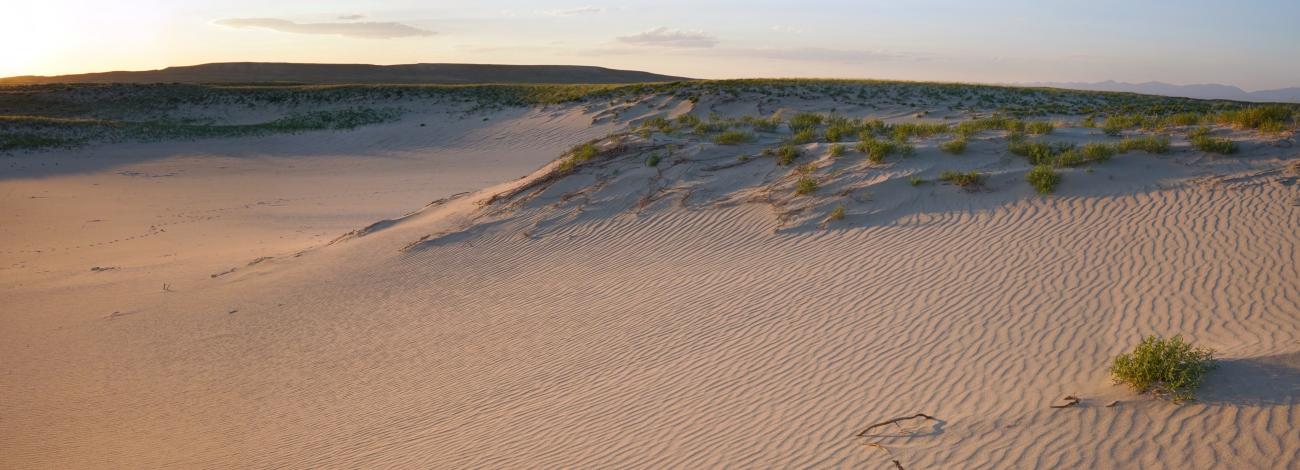
Buffalo Hump WSA
Values
The Buffalo Hump WSA is a dynamic landscape that includes undisturbed sagebrush-grassland ecosystem intermingled with active white sand dunes. The northern and western parts of the WSA contain ponds, grass-covered marshes, and playas. The southern and eastern part includes active dunes and meadows and provides the most recreational opportunities. The dunes are remarkable in the way that the sand changes the landscape with every wind storm, building 100-foot drifts, sand valleys, blowouts, dunes and hills. The numerous sand hills and freshwater ponds in the WSA provide solitary areas with few outside sounds. Recreational opportunities include hiking, backpacking, camping, bird watching, wildlife photography, horseback riding, and hunting.
The WSA also contains archaeological and wildlife values. The Finley site and the Eden-Farson archeological sites are where the discovery of a distinctive projectile point gave evidence of one of the earliest human inhabited sites in North America. The Buffalo Hump WSA is adjacent to the Sand Dunes WSA, only separated by an abandoned sand covered railroad bed. These two WSAs are the primary range of the only herd of desert elk in Wyoming. The area also attracts mule deer, pronghorn antelope, raptors, and coyotes. The Buffalo Hump WSA lies within the Greater Sand Dunes Recreation Area of Critical Environmental Concern, to protect wildlife and cultural resources.
Visitation Information
From Farson, WY, Drive south on Highway 191 approximately 8 miles to the Fifteen Mile Knoll Cutoff Road and turn left. Drive east for approximately 15 miles to the intersection with an abandoned railroad grade. Drive the railroad grade north, stopping where sand has blown over the railroad grade. The WSA is on the left side of the grade.
Visitor Advisory
Wind-blown sand over the railroad grade can cause vehicles to become stuck, exercise caution. The WSAs in the BLM Field Office are primarily accessed by unnamed or unsigned two-track roads that in many cases may be difficult to find without sufficient navigational skills and equipment. The access roads to these areas often requires four-wheel drive or high-clearance vehicles. Visitors should be prepared for adverse weather and road conditions.
